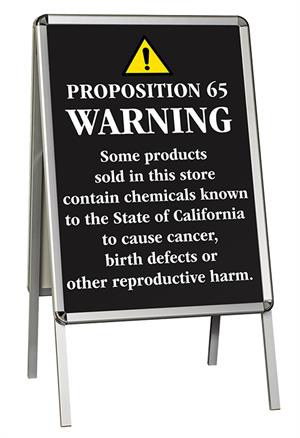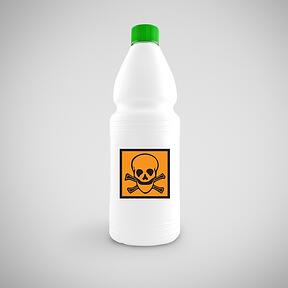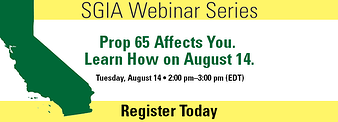- Formally named the Safe Drinking Water and Toxic Enforcement Act, it was first enacted in 1986. It is intended to help Californians make informed decisions about protecting themselves from chemicals known to cause cancer, birth defects or other reproductive harm.

- There are over 900 chemicals on the Prop 65 chemical database. Oversight of the database, including adding and deleting of chemicals, is managed by California’s Office of Environmental Health Hazard Assessment (OEHHA).
- The ONLY section of the program that was amended was Article 6, Clear and Reasonable Warnings.
- What does a warning mean? By placing a warning on a product label or posting or distributing at a workplace or business, the business issuing the warning is aware or believes that it is exposing individuals to one or more listed chemicals.

- Businesses with less than 10 employees and government agencies are EXEMPT from Prop 65’s warning requirements and prohibition on discharges into drinking water sources.
- Businesses are also EXEMPT from the warning requirement and discharge prohibition if the exposures they cause are so low as to create no significant risk of cancer or are significantly below levels observed to cause birth defects or other reproductive harm.
- I operate a business in California — what do I need to do? Cover any Prop 65 chemicals used in the workplace in your Right To Know training required by the Occupational Safety and Health Administration’s Hazard Communication Standard. If you do, no additional warning is required. However, your training should cover exempt materials, such as consumer products and pesticides.

- OEHHA has developed safe harbor levels to help businesses determine if a warning is necessary. A business has “safe harbor” from Prop 65 warning requirements or discharge prohibitions if exposure to a chemical occurs at or below these levels.
- What if there is no safe harbor level for a listed chemical? Then, businesses that expose individuals to that chemical would be required to provide a Prop 65 warning, unless a business can show that the anticipated exposure level will not pose a significant risk of cancer or reproductive harm. There is a calculation!
- What is not required? The testing of the product or the certification that the product meets Prop 65 requirements.
